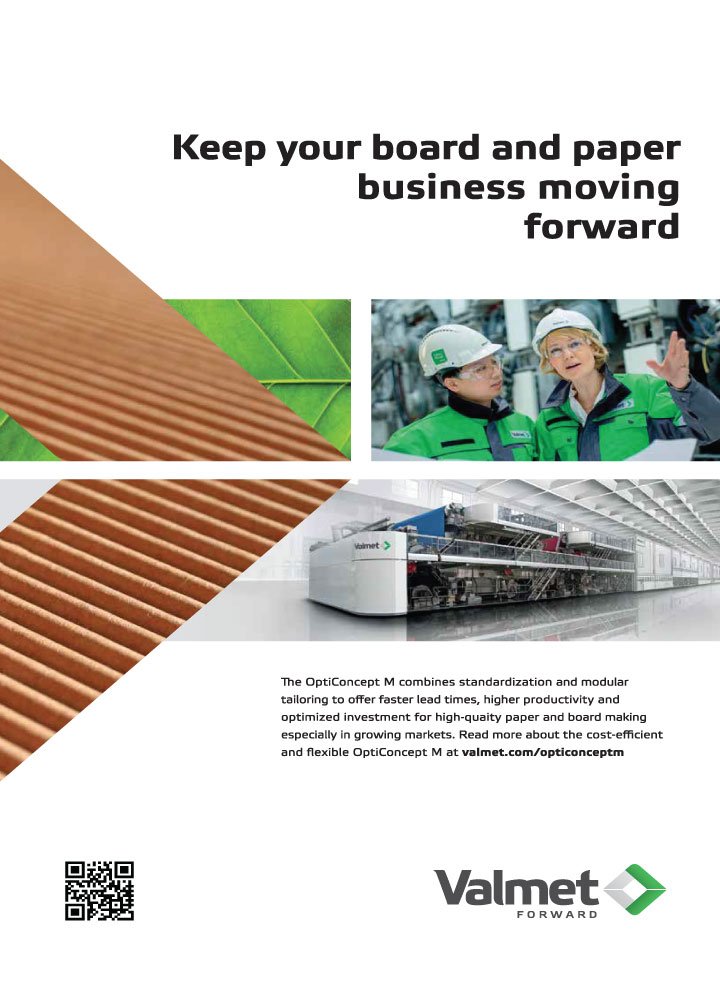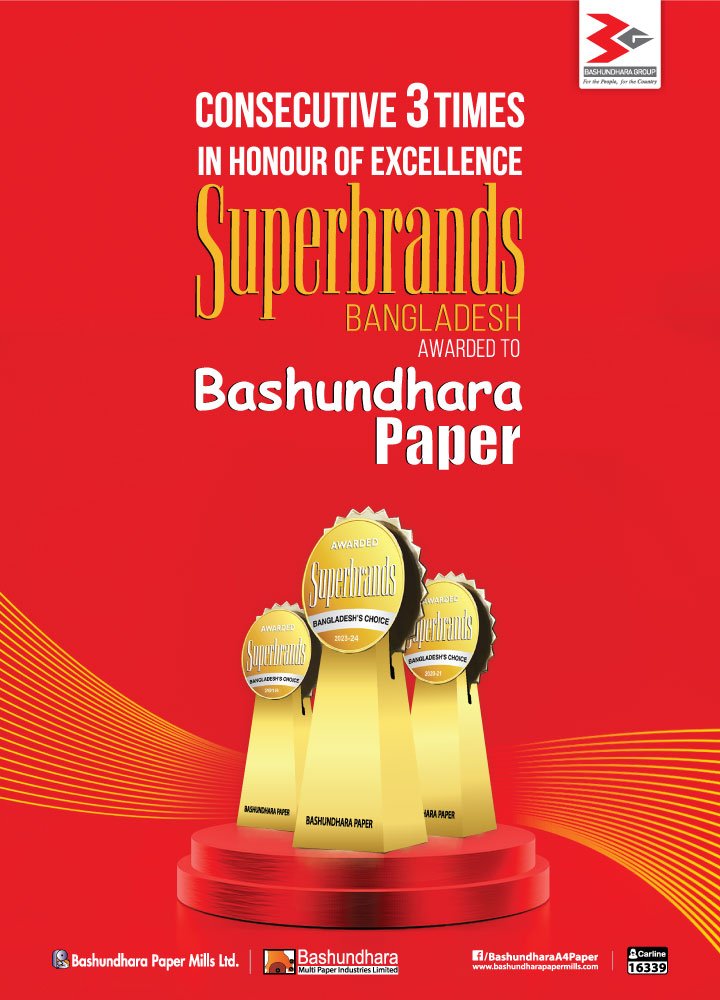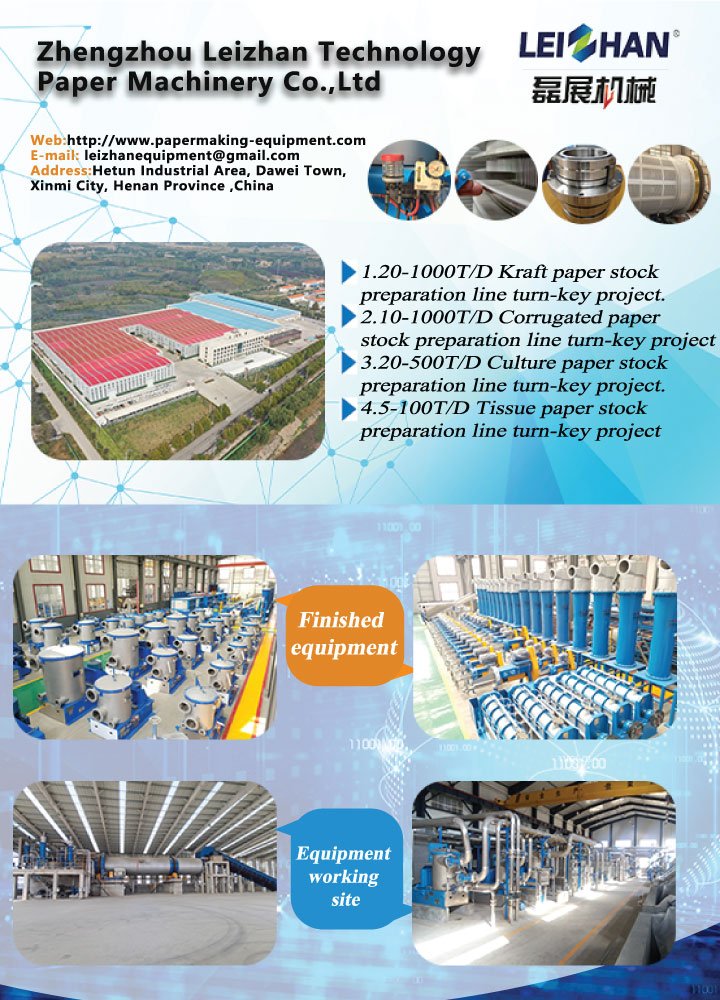Forming Fabric Properties Related To Machine Operation & Paper Quality


Formation of the sheet is the most critical phase of paper manufacturing. If the sheet is not formed properly in the forming section, there is little that can be done to correct it in the remaining sections of the paper machine. Many sheet properties such as opacity, smoothness, tensile and tear strength, and formation are directly controlled by the forming section of the machine. The manner in which the fillers, fibers, and water flows are handled in the forming section controls sheet properties and contributes to the way the press and dryer sections will react to the fiber mat.
There are various forming section configurations of paper machines and pulp machines. Although the principle of sheet formation is the same, the process of sheet formation depends on the machine configuration. Therefore, sheet formation process and equipment may differ from machine to machine.
There are five basic processes which take place in the forming section of the paper machine. The processes are interrelated. Each process is necessary for good operation of the machine.
- The first basic process is to take the properly prepared furnish (mixture of water, fibers, fillers, fines, and additives) from the stock preparation plant and dilute it to a low consistency for easy relative motion between all the particles in furnish, particularly the fibers. The typical consistency at the head-box is around 0.5-1.0%. The turbulence developed in the piping, pumps, cleaners, and the head-box results in very uniformly dispersed stock slurry.
- Next, the slurry is distributed across the width of the machine by the head-box and slice. A good head-box will distribute the fibers uniformly while maintaining good dispersion. The uniformity of the distribution directly affects the uniformity of the sheet basis weight in both machine and cross directions, as well as the micro scale weight uniformity of the final sheet.
- The uniformly distributed and diluted slurry is delivered onto the forming fabric through the head-box slice or nozzle in such a way as to promote the formation of a uniform fiber mat on the top surface of the fabric. At the same time, water must begin to drain through the forming fabric, which further develops the fiber mat.
- As the free water is drained through the fabric, and while the fiber mat is still in a wet compressible state, it is consolidated and compacted in a controlled way to increase fiber-to-fiber contact and gradually close up the porous structure of the web. Compactness and thickness of the fiber mat increase as it travels down through the machine. The main factors affecting filtration of the furnish are temperature, forming fabric properties, fabric tension, stock consistency, refining degree, fiber properties, additives, and the type of machine drainage elements.. Flow rates must be controlled to give acceptable levels of fines, fillers, and fiber retention. Fiber-to- fiber contact and pore structure greatly affect the final sheet properties.
- In the last step of the formation process, the web must be as dry as possible at its point of removal from the forming fabric to achieve high wet strength. Wet strength increases with increased dryness. From the head-box to the point of transfer to the press section, gravity and induced drainage forces work together to drain as much water from the fiber mat as possible to reach maximum dryness. The forming fabric itself, due to its structure, will contribute to the dryness of the sheet by enabling water drainage while providing support for the fiber mat being built on the top of the fabric.
Traditional forming fabric structures involve a series of design compromises in which fabric life, fabric stability; sheet formation, fiber retention, and fabric drive-load are traded off, one for another, in order to achieve a specific end result.
It is intuitively obvious that the forming fabric upon which a sheet of paper requiring a high level of smoothness or a surface upon which to print, should be as mono-planar as possible. As the fibers mold themselves around the yarns which comprise the surface of the fabric, a certain amount of non-uniformity is introduced into the sheet because of the cylindrical shape of the component yarns. Larger diameter machine direction yarns contribute to stretch resistance, but disrupt the smoothness of the mat of paper fibers which are laid upon them. Similarly, larger diameter CMD yarns will reduce the manufacturing cost of the fabric and contribute to wear resistance, stability and drainage, but also disrupt the planarity of the sheet. In typical structures, one of these considerations (MD vs. CMD yarn size) will win out, and a fabric is produced in which certain properties will be maximized and others sacrificed. The first main difference in the forming fabric structures described in this paper is that yarns in both directions are of equal or nearly equal size to eliminate trade-offs in the papermaking surface.
Mono-planarity and square drainage holes
Starting with the aforementioned design consideration of same sized yarns, it also makes sense to weave the papermaking surface in a “plain weave”. For those not familiar with the art, a plain weave structure allows each MD yarn to pass over one CMD yarn, before going under one CMD yarn to complete the repeat pattern. This puts support points or “knuckles” as close as possible to one another, compared with other, more complex weaves. Using same or virtually the same sized yarns in both directions of the paper forming surface and weaving them with close to identical spacing per linear unit of length or width, produces a surface that maximizes the property of mono-planarity with square shaped drainage holes.
Drainage and retention
Until the recent past the only tools that fabric designers had at their disposal were some basic equations such as Fiber Support Index (FSI) and Drainage Index (DI), both of which were developed to predict the performance of single layered forming fabrics “back in the day”, but that have severe limitations in accurately predicting performance of modern structures. Frequently the result is that the paper machine was the ultimate design tool with which to develop and refine new designs.
Retention
Forming and retaining the fibers delivered from the head-box is, after all, the primary purpose of a forming fabric. Higher retention values can allow lower head-box consistency and therefore improved formation. So in addition to the relatively minor advantages relating to machine cleanliness, improved retention can have a direct impact on sheet appearance, smoothness, and quality. High FSI numbers can be reinforced by forming the sheet as high as possible from the central plane of the fabric. Keeping the fibers up and level on the surface of the fabric creates a dense smooth mat, with wire side as similar as possible to the top side of the sheet, minimizing two-sidedness
Fabric stability
High speed operation particularly on twin wire applications requires a high level of stability in both the MD and the CMD. MD stability is paramount because high tensions are required to prevent fabric distortion in the forming zone. Similarly, significant fabric stiffness and resistance to diagonal deflection (sleaziness) are required from the weave structure and yarns in the CMD. As was discussed in regard to fabric smoothness and drainage uniformity, there are typical trades that take place to maximize mechanical properties in either direction, which detract from the mechanical properties in the converse direction.
CMD Stiffness
As discussed earlier, the amount of CMD stiffness affects the sheet profile on twin wire machines. The ability of the fabric to withstand cross direction deflection, particularly in the pressurized environment of the forming zone, is critical to maintaining a flat sheet profile. Fabrics capable of running at high tensions and without CMD deflection produce consistently better moisture profiles and an inherently reduced need for energy to dry wetter streaks. A flatter profile should result in higher machine speeds or reduced energy consumption. CMD stiffness is measured in the lab by the Taber Stiffness Index.
Wear resistance and drag load reduction
The primary function of the back side of the forming fabric is to resist the abrasive wear of stationary elements while not constraining the flow of water through the structure. This will always be the case, but in previous fabric embodiments, the large diameter yarns used to resist wear have the negative side effect of increasing drag load from the coarseness of the pattern of those same yarns. The new structure has been developed in a pattern which, although it uses large diameter wear yarns, has placed these yarns in a more widely spaced pattern which reduces the contact area and results in lower drag loads. The pattern and spacing of these yarns allow the fabric to “skate” over stationary foil and vacuum units.
Conclusion
New Generation forming fabrics has been developed with the over-riding premise that compromises in design attributes need not be accepted as a normal part of the “pluses and minuses” of the design process. Trade-offs that historically are the normal outcome of maximizing a particular desired attribute, no longer need to be tolerated since all desirable properties can be incorporated into one design, whether actually identified as specific needs, or not.





















